Continuing with my Decoded column’s question-and-answer format, this month’s question is a common one – particularly when building owners and facility managers are focused on increasing security. If you have a code question you’d like to see answered in my column, you can submit it by visiting iDigHardware.com/decoded-qa.
This Decoded article will be published in the August 2023 issue of Door Security + Safety
.

One of the cardinal rules that applies to door openings in a means of egress is that the door must be unlatched for egress with one motion. There are some exceptions to this rule, which I will cover in this month’s Decoded column.
Question: When is it permissible for an egress door to have hardware that requires more than one releasing motion to unlatch the door?
The first thing to consider is that the egress requirements of the I-Codes apply to doors that are required for egress, and also to doors that are provided for egress purposes. For example, if an assembly space is required to have three exits in order to accommodate the occupant load, but four exits are provided, it’s likely that all four doors will have to meet the requirements of the I-Codes. The NFPA codes may be interpreted differently, as the requirements of that code apply to door assemblies in a means of egress without a specific reference to additional doors.
The requirements of the I-Codes and the NFPA codes related to unlatching an egress door are very similar:
I-Codes: Unlatching. The unlatching of any door or leaf for egress shall require not more than one motion in a single linear or rotational direction to release all latching and all locking devices.
NFPA 101: The operation of the releasing mechanism shall release all latching and all locking devices of the door leaf with not more than one motion in a single linear or rotational direction, unless otherwise specified in 7.2.1.5.3.4, 7.2.1.5.3.5, 7.2.1.5.3.7, or 7.2.1.5.3.8.
Note that the requirements for one releasing motion/operation apply to the act of unlatching the door. The act of opening the door can be a separate operation. To clarify the requirements for the releasing methods, the Builders Hardware Manufacturers Association (BHMA) has created a standard called A156.41 – Standard for Door Hardware, Single Motion to Egress. This standard addresses the single motion in more detail.
Each of the model codes includes several exceptions to the unlatching requirements, where hardware that requires more than one releasing motion is allowed.
The I-Codes exempt the following locations from a single motion to unlatch the door:
1. Places of detention or restraint. This typically applies to facilities classified as Institutional Use Group I-3, such as jails and prisons. Specific requirements for these occupancies are addressed in the codes.
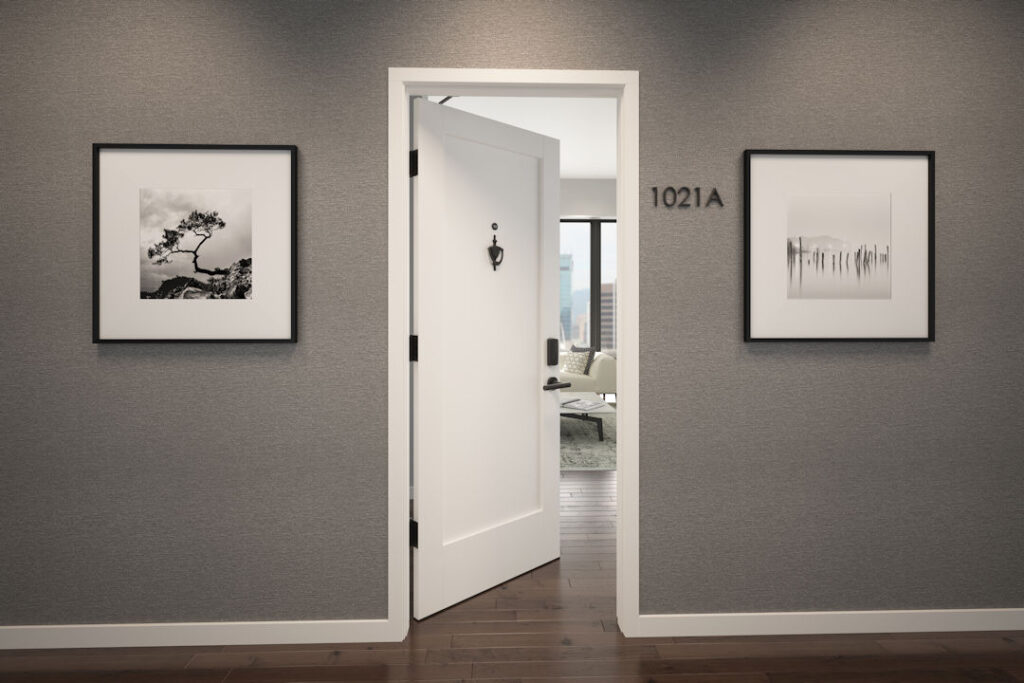
One of the locations where both sets of model codes allow a second releasing motion to unlatch the door is for entrance doors serving individual dwelling units and sleeping units in residential occupancies.
2. Locations where manually-operated bolt locks (flush bolts and surface bolts) are allowed on the inactive leaf of a pair of doors. The I-Codes allow manual bolts on doors that are not required for egress in individual dwelling units or sleeping units and on pairs of doors serving storage or equipment rooms. In Business (Group B), Factory and Industrial (Group F), and Storage (Group S) occupancies, the I-Codes allow manually operated bolts on the inactive leaf when the pair of doors serves an occupant load of less than 50 people in buildings that do not have a sprinkler system. In buildings that are equipped throughout with a sprinkler system, manual bolts are allowed for these same use groups if the active leaf of the pair accommodates the occupant load of the area served by the doors. When manual bolts are installed, no hardware may be present on the inactive leaf that would indicate that the door could be used for egress. In Group I-2 health care occupancies, pairs of patient room doors can be equipped with self-latching bolts and the same prohibition on dummy hardware applies to the inactive leaf.
3. Pairs of doors equipped with automatic flush bolts. Again, no hardware is allowed on the inactive leaf that would lead a building occupant to believe that the inactive leaf is operable.
4. Entrance doors serving individual dwelling units and sleeping units in Residential Use Group R occupancies where the occupant load of the unit is 10 or less. These doors may be equipped with a night latch, dead bolt, or security chain in addition to the latching hardware, if the security device is openable from the inside without the use of a key or tool.
NFPA 101 includes the following exceptions to the one-motion unlatching requirement:
1. Egress doors serving individual living units and guest rooms of residential occupancies. These doors may have a separate security device that requires no more than one additional releasing motion, if the device is operable from the inside without the use of a key or tool. The additional security device must be mounted no more than 48 inches above the floor. Existing security devices are permitted to have two additional releasing motions.
2. Doors serving an area with an occupant load of three or less. For these doors, the existing hardware may be of a type that requires two releasing motions as long as those two motions are not required to be performed simultaneously. Note that the I-Codes do not include a similar exception for rooms with a low occupant load.
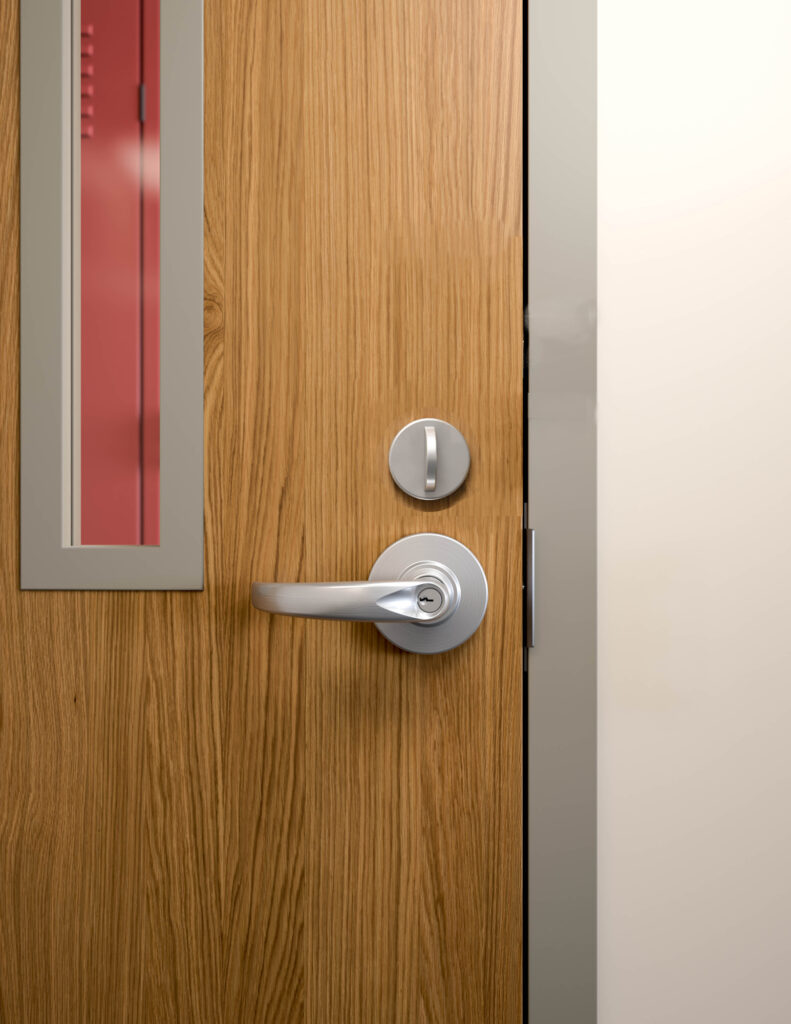
The 2018 and 2021 editions of NFPA 101 allow a second (non-simultaneous) releasing motion for existing classroom doors in existing schools. The IBC and IFC do not include this exception.
3. Existing educational occupancies and existing day care occupancies. NFPA 101 allows these doors to have hardware that requires two non-simultaneous releasing motions if all of the other criteria stated in the code are met. This criteria includes a mandate for hardware that is capable of being engaged from the egress side of the door without opening the door. Egress must be accomplished without the use of a key, tool, special knowledge or effort. The releasing mechanisms to unlatch the door must be located between 34 inches and 48 inches above the floor. The door must be able to be unlocked and opened from outside of the room with a key or credential. Refer to the Life Safety Code for additional requirements. This exception only applies to locations where NFPA 101 is the adopted code, as the I-Codes do not permit hardware that requires a second releasing operation to be installed on classroom doors.
As you can see, there are very few locations where hardware that requires a second releasing motion to unlatch the door is allowed in a means of egress. For the vast majority of doors, the model codes require doors to unlatch for egress with one motion, without the use of a key, tool, special knowledge or effort. The codes do not prohibit more than one locking or latching device installed on a door, however, the latches must be released simultaneously with one motion unless there is a specific exception that applies to the door opening.
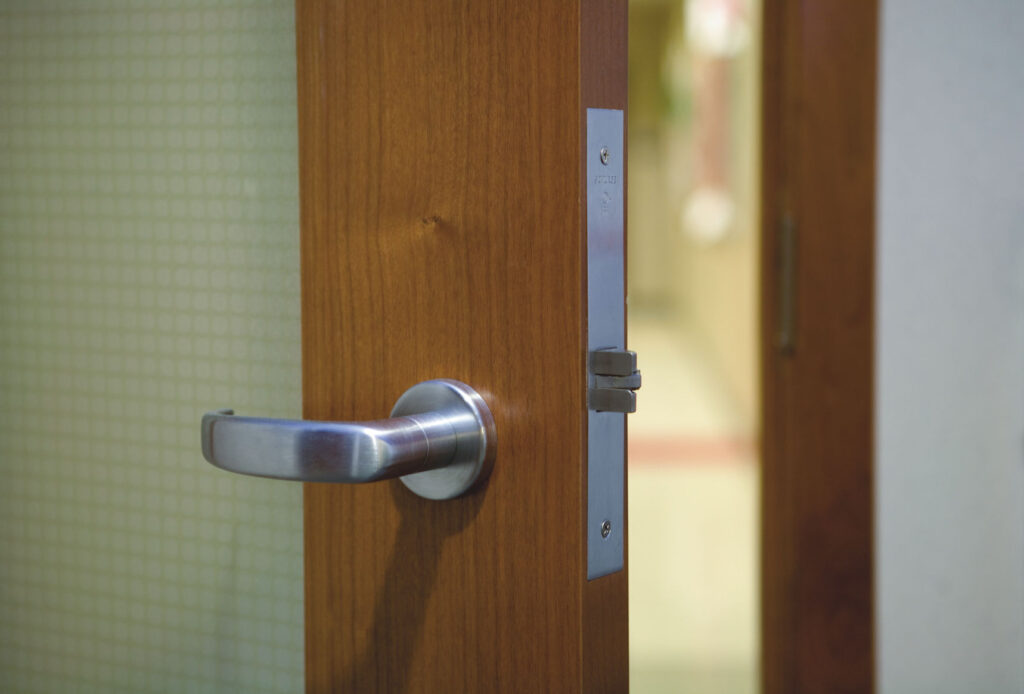
The vast majority of doors in a means of egress are required to unlatch with one releasing motion. This limitation does not apply to opening the door, it is specific to the motion required to release the latch.
There are additional requirements related to accessibility that apply to latching hardware. For example, hardware must be operable without tight grasping, pinching, or twisting of the wrist. The allowable mounting height range for the releasing hardware is 34 inches to 48 inches above the floor for most jurisdictions; some state code requirements vary. The force to operate the hardware is also limited by the codes and standards. Currently the I-Codes limit the operable force to 15 pounds of pushing or pulling motion or 28 inch-pounds of rotational motion. The ADA Standards for Accessible Design require door hardware to be operable with 5 pounds of force, maximum.
Before specifying, supplying, or installing hardware that requires more than one releasing motion, it’s important to verify that the second releasing motion is allowed by the adopted code. State and local codes may include modifications to the model codes, and the Authority Having Jurisdiction (AHJ) can assist with interpretations.
You need to login or register to bookmark/favorite this content.


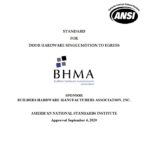


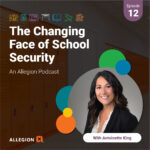
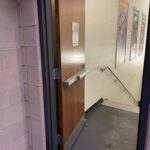


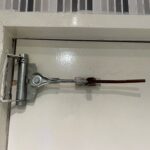
This is one of the best and most comprehensive yet concise guides you’ve posted yet on this topic. Outstanding!